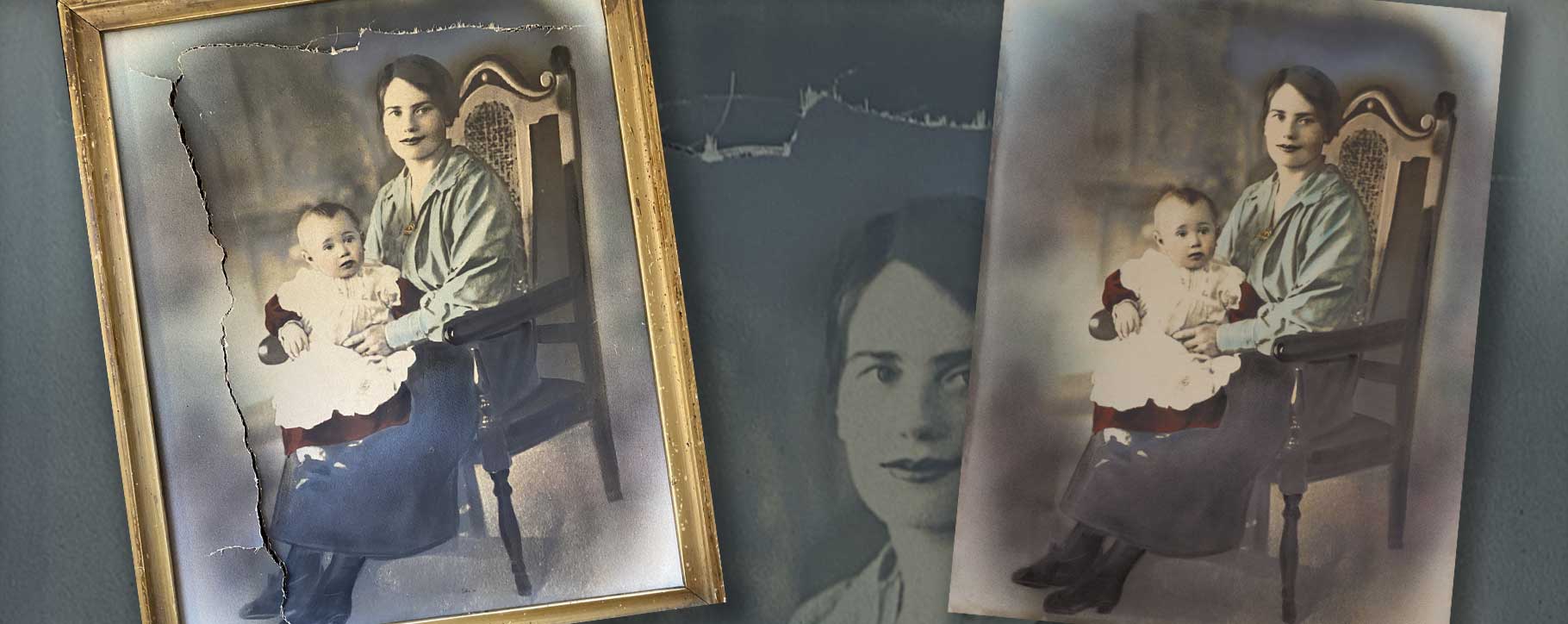
Photographs can have value both as important family pieces and valuable artworks. Although today we have great emphasis on the ability to digitally copy and reproduce what was once physical media, the material significance of a photographic print may still require treatment from a professional conservator.
There is often a debate over whether the physical form of a photograph is more or less important than a computerised copy, but in many cases, the physical photograph can hold personal or historical significance. For instance, the materials used in a Victorian daguerreotype such as the silver-plated copper base, or the surrounding card mount with details of its origin, add to the importance of the piece as a historic object. In contrast, commercially printed photographs from recent decades may not have such a compelling material but could have important connections through their heirloom quality or prior proximity to a famous photographer or lost loved one.
Original photographs by celebrated photographers such as Dorothea Lange, David Bailey, Ansel Adams, Robert Mapplethorpe and Diane Arbus may also hold monetary value as material artworks. A photograph that has been hand-developed in a dark room by such a renowned name is not able to be digitally reproduced, as the higher value is derived from its physical creation in the hands of the artist.
In some cases, none of these factors may exist at all, but the physical importance may prevail simply as a traditional choice. No matter what the reasoning is, whether the piece has great monetary or sentimental value, our team of professional photo restoration specialists will always strive to restore and preserve the original print, in the same way, that they would approach a highly valuable piece of fine art.
Torn, scratched and folded photo restoration
The most common form of deterioration occurs due to torn areas, bends and folds in the photographic paper, and scratches to the surface. This can be caused by everyday wear or precautious storage spaces which allow them to rub against other objects or receive bite marks from pests. Accidental damage may also lead to these effects, especially when the photograph is taken out of a safe place during viewing or whilst it is being framed. Incidents such as an escape of water, fire or smoke also can impact photographs too.
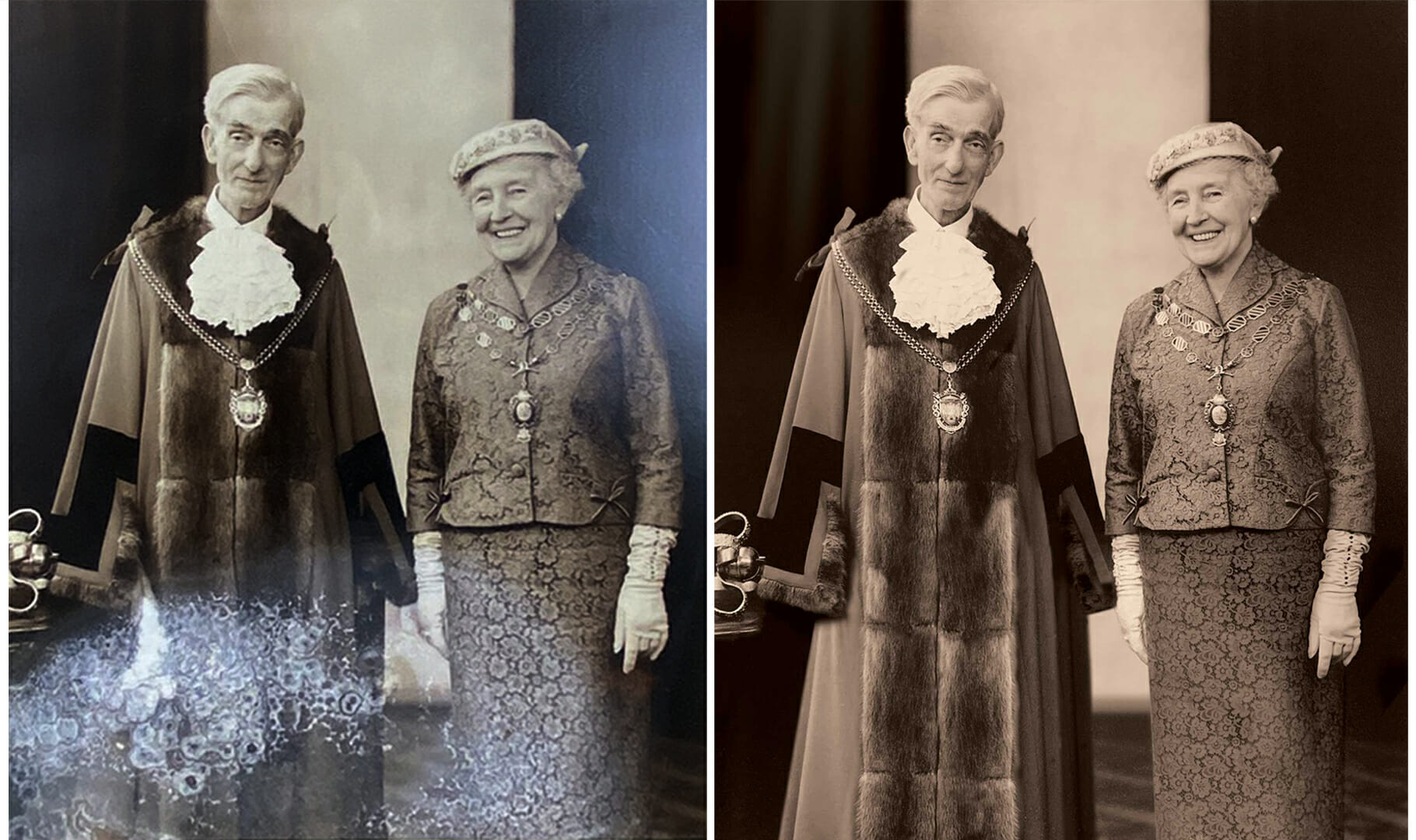
Prints from the last 50 years are most likely to have been developed onto photographic paper. This type of card has a thin light-sensitive formula called emulsion, in which the photograph is developed with a short burst of light in a dark room or through a commercial printer. In older photographs, this layer may have been created from gelatin. The emulsion can break under pressure from a folded line or deep scratch, loosening the area in which the photograph has been developed. This will display as the blank card beneath showing through, or lines appearing as you might find upon crinkled or scratched paper. As this layer is so vulnerable, it is recommended to keep it beneath a protective layer of glass or plastic so it can be viewed without risk.
In the same way, a work on paper may be restored, photographs can also have torn and scratched areas re-stabilised on strengthening conservation appropriate Japanese tissue paper. Torn elements can be re-connected with conservation techniques, allowing for the visual disturbance to be reduced. Areas of bending which have resulted in lines of distortion or breakages in the photograph layer can be flattened with a weight treatment to avoid any further loss and will be further protected with a stabilisation treatment.
Discoloured or moisture damaged photo restoration
Like works on paper, photographs can be heavily affected by their environment and any sunlight exposure. UV rays can decay the colours and tonal elements of a photographic layer, leaving some pigments to remain whilst others perish. This is most noticeable if you remove a mount from the photograph and witness the brighter, original colours which have been shaded. For maximum protection, it is recommended that important photographs be stored away from sunlight, or displayed in a shaded location with UV reducing glass. Fading is not something that can be reversed on a physical photograph, but further damage can be prevented through conservation techniques and professional guidance on display or storage techniques.
Further environmental damage may originate from moisture in the air, leading to mould, moisture absorption or foxing (rusty brown spots) on the mount or photograph itself. Photographs should be kept in a dry environment, away from steamy or humid conditions. This type of damage can be rectified by our specialist conservator, who is able to gently clean away mould spores and foxing, as well as re-stabilising any weakened areas.
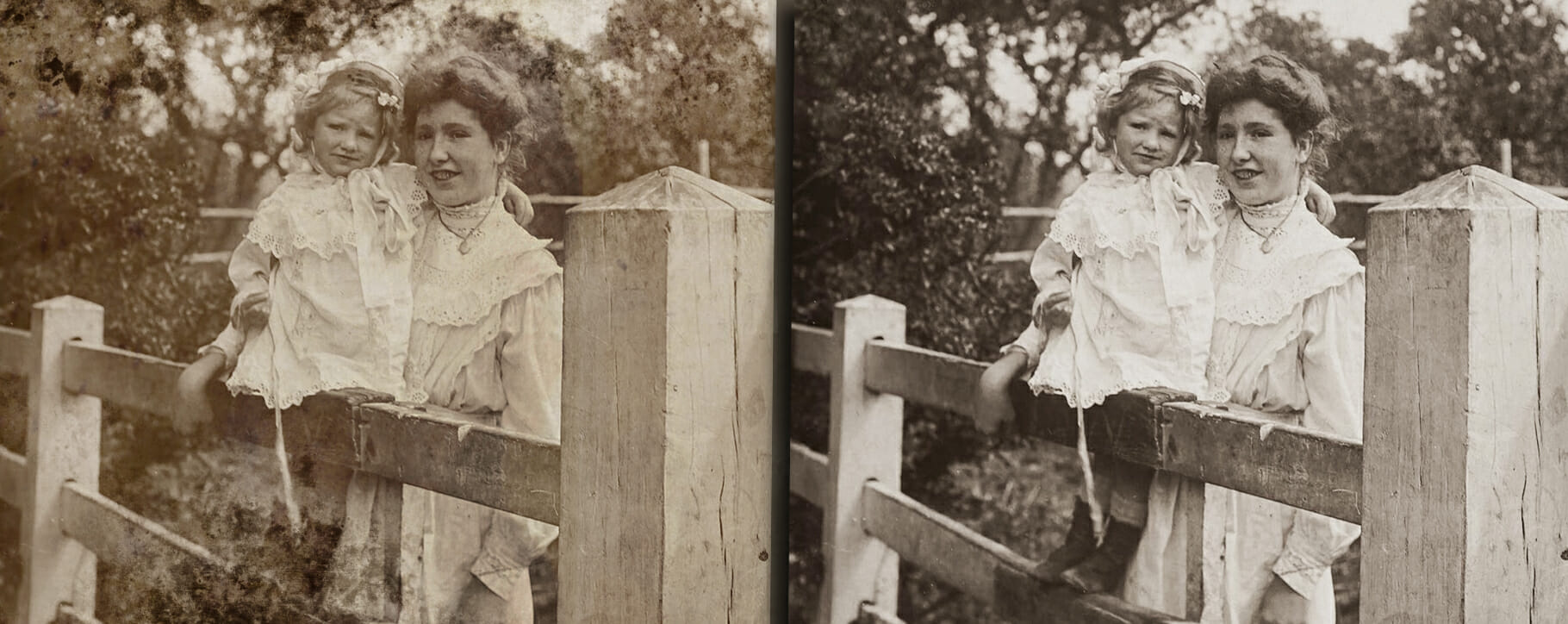
Stained photographs, as well as those which may have been contaminated with dirt and grime, can also be cleaned by our conservator, who is able to carefully wash them in tailored solutions. This is important following a flood of water or exposure to fire, as the debris and smoke could contain harmful and acidic particles which can decay the photograph.
Staining may also occur due to improper framing. Acidic materials may be present in the mount board, adhesive, or surrounding areas of a piece, leading to vast amounts of discolouration and decay in these areas over a long period of time. Alternatively, they may not include appropriate slips or spacers to keep the photograph away from the glass risking the photograph sticking to the glass. This type of damage can be restored, our conservator can wash the surface of contamination and discolouration, as well as stabilising weak points. Our frame technicians can then provide conservation-approved options which allow for the ongoing preservation of the photograph.
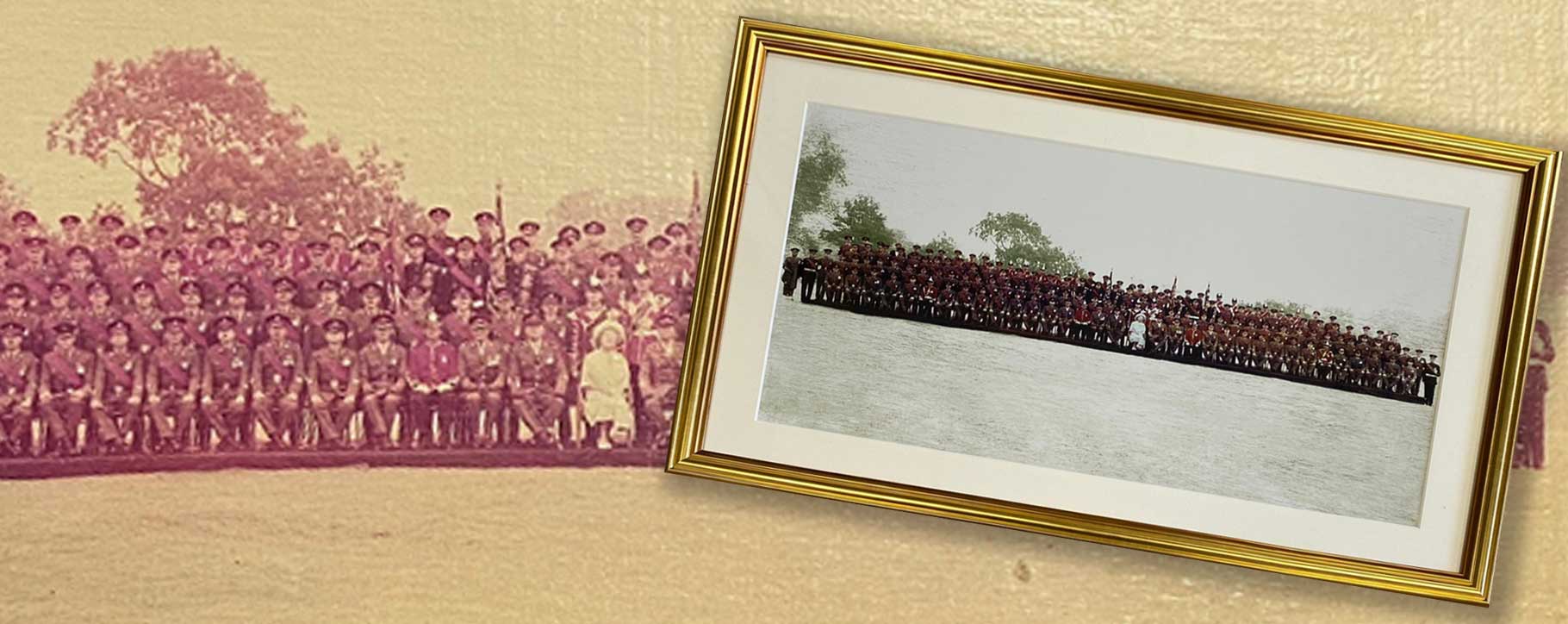
Can you digitally restore a photograph?
Digital restoration is offered by our team if there is no viable way to restore a physical copy and if a client has a preference for this. We will always strive to restore the original print before digital restoration is considered.
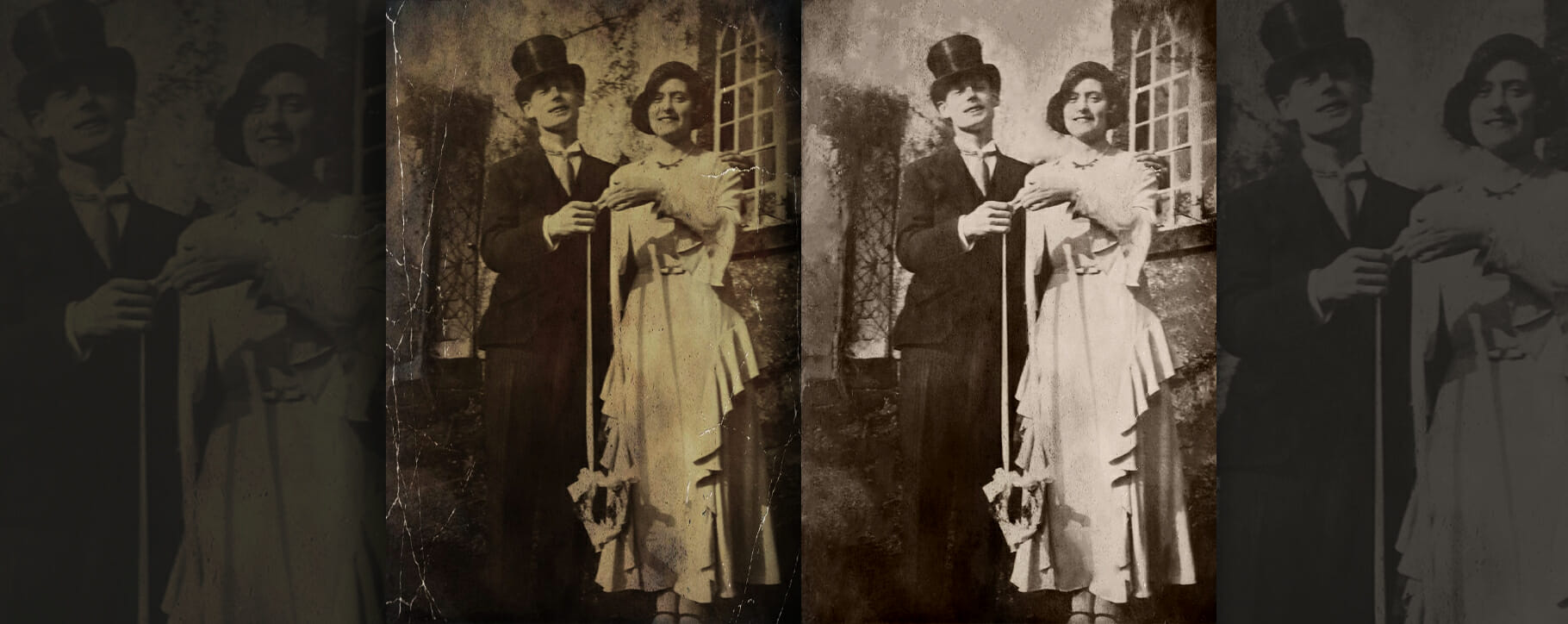
Our conservators have been able to create incredible results with this process, including this discoloured military photograph featuring the Queen Mother, which was of high sentimental importance to our client.
Using digital skills, a scanned photograph is able to be recoloured using layers of differing tones, in some cases this may be slowly created pixel by pixel, to produce a smooth and realistic finish. The end result is printed and re-framed with appropriate materials to ensure its protection for generations to come.
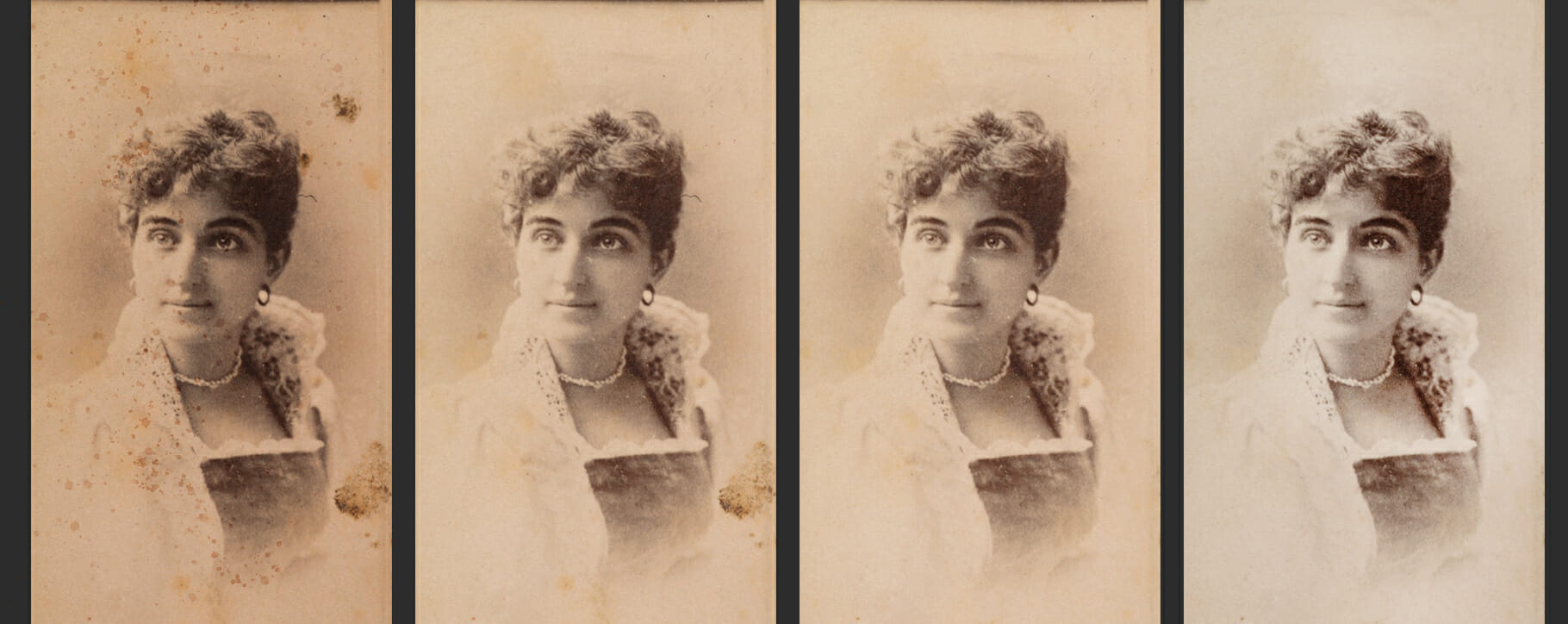
Read more about our photo restoration process or if you have a photograph in need of some help, please contact us to find out how we can help.






